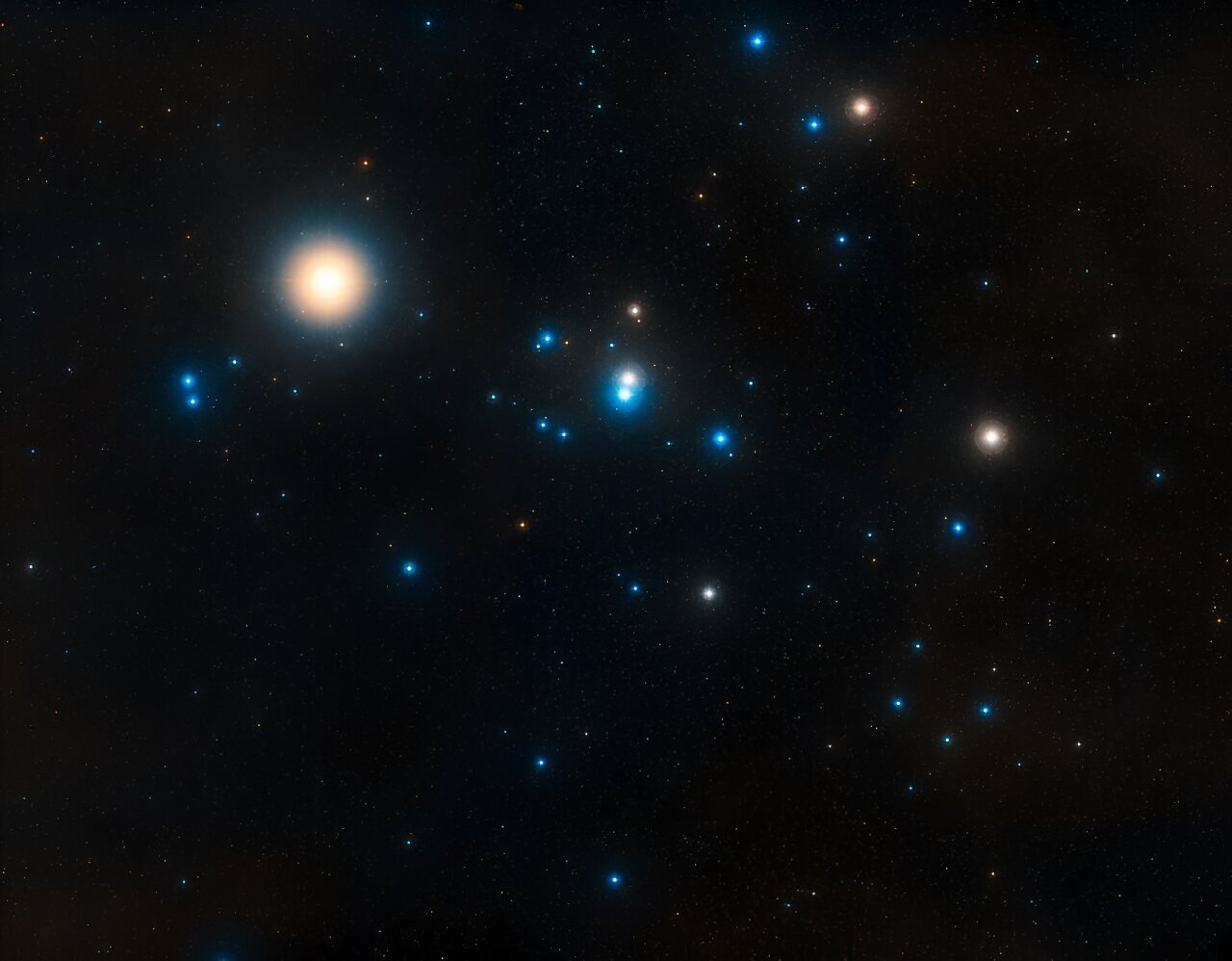Scientists are studying the reasons why there are so few white dwarfs in the neighboring Hyades star cluster. Recently, they discovered one of them who had escaped from there. This is a very large object for its own class. Its mass is 1.3 times that of the sun.

Mysteries of the Hyades cluster
Scientists led by David Miller from the University of British Columbia published in The Astrophysical Journal a study on an extremely massive white dwarf ejected from the Hyades.
Hyades is a scattered star cluster, a group of stars born together in a single gas-dust cloud that have been traveling through the universe ever since. This is one of the closest similar clusters to the Earth, so it is quite visible in the sky. They look like a small inverted letter V next to Aldebaran, and they are pointed at by the stars in the Orion belt.
Hyades and their white dwarfs
Due to this proximity, Hyades is a better studied scattered cluster. However, they still have a lot of mysteries. For example, scientists have recently suggested that several black holes may be hiding inside them, and they are the closest similar objects to Earth. But now we are talking about other exotic bodies — white dwarfs.
These objects have a diameter comparable to the Earth, but their mass is from half to the whole mass of the Sun. White dwarfs are very dense stars, inside which thermonuclear reactions have almost gone out, but they shine with residual light, cooling down very slowly.
The mystery of the white dwarfs in the Hyades is that there are very few of them there for such a large and old cluster. Only eight pieces were found over the years of observation. However, a new study reveals a little bit of the mystery of where they go.
White dwarf that “escaped” from Hyades
The most plausible idea today is that white dwarfs leave Hyades due to gravitational interaction with other objects. To understand this as “escape” or “exile” is a matter of our earthly perception of cosmic processes.
Anyway, scientists found a white dwarf which trajectory proved that it was once a part of the Hyades, but left them. More precisely, experts found three similar stars that could have originated from there, but an analysis of the movements of two of them showed that they were not members of this star cluster. However, it still proves their theory.
Mystery of star birth
However, the exiled star unexpectedly gave scientists a surprise. It belongs to the supermassive white dwarfs. Objects of this class cannot be heavier than 1.44 times the mass of the Sun, otherwise they will turn into neutron stars. However, most of them are actually much lighter and have only 0.6 solar masses.
And only a small part of white dwarfs have a mass comparable to our luminary and they are called supermassive. The exiled star with a mass of 1,317 solar is one of those. It is still far enough from the border of Chandrasekhar, but special conditions are necessary for such an object to form.
Usually supermassive dwarfs are formed in close pairs. Stellar material flows from a smaller star to a heavier one, and it gradually becomes larger and larger. However, an analysis of the age of the exiled star shows that only one ancestor existed.
According to phys.org
Follow us on Twitter to get the most interesting space news in time
https://twitter.com/ust_magazine
